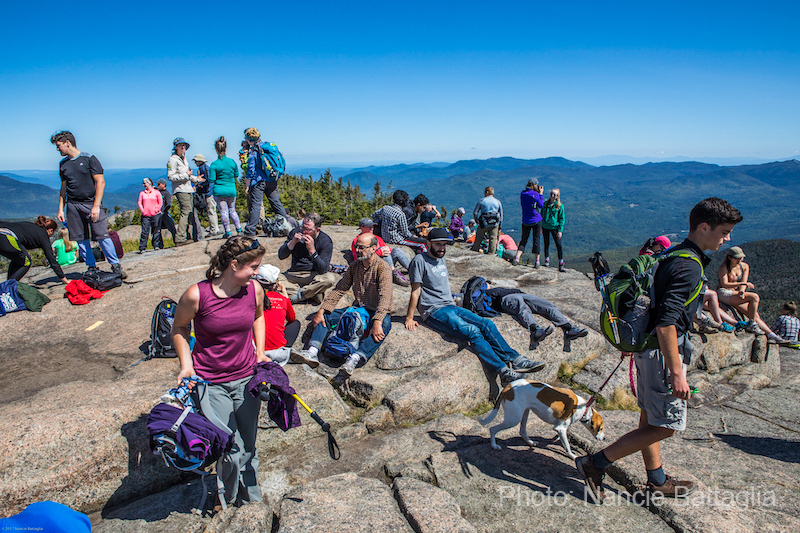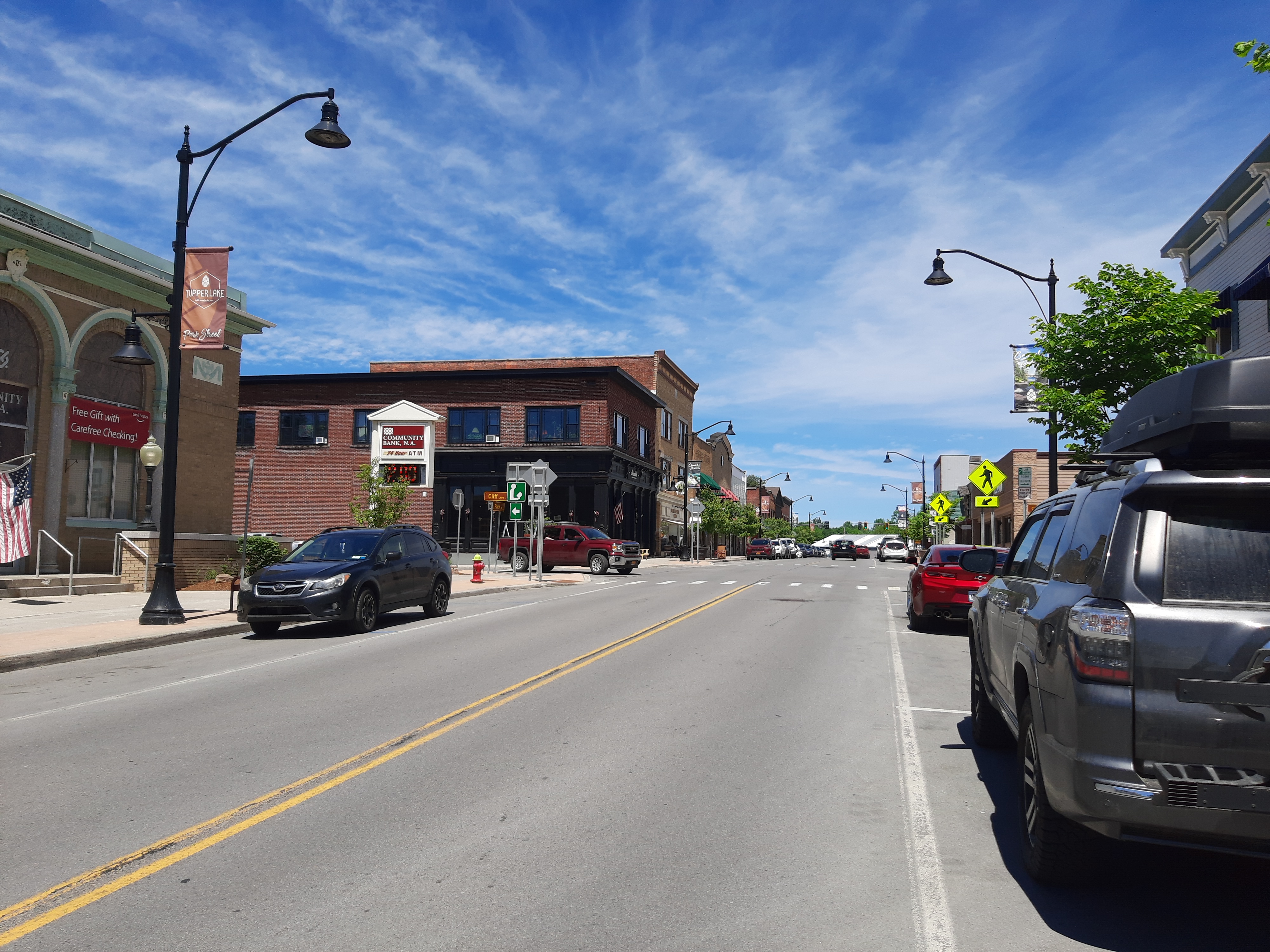
Adirondack Objectives for the 2022 Legislative Session
By: Kevin Chlad - Adirondack Council Director of Government Relations
Monday, January 3, 2022
As 2022 begins, we realize that it will look similar in some ways to last year and very different in others. The pandemic continues, leaving a return to “normal” farther away than we might have expected. Governor Hochul now leads the State of New York, promising to fight COVID and climate change, bring greater transparency to the state, and be a Governor that listens and acts decisively. On January 5, the Governor will deliver her State of the State message, and soon thereafter will submit her executive budget proposal. These are tremendous opportunities for the Governor to demonstrate what kind of a leader she intends to be for the state and for the Adirondack Park.
Celebrating Early Actions by Governor Hochul in the Adirondacks
The Governor has taken action in the early days of her administration, setting the stage for what we hope will be a bold and exciting agenda for Adirondack wilderness, clean water, and communities. She selected John Ernst as chair of the Adirondack Park Agency board, signed a strengthened aquatic invasive species prevention legislation, and selected a very strong slate of candidates to serve on the Adirondack Road Salt Reduction Task Force. Governor Hochul has also committed to pushing for a $4 billion environmental bond act, a $1 billion increase over the bond act proposal authorized last year. If approved by the legislature, the increased bond act would go before the voters in November 2022.
These early actions set the stage for a bold new approach by the Hochul administration, breaking with the attitude of prior administrations. The “status quo” approach to the Adirondacks has not served the communities or wilderness areas of the Park well enough in recent years. A vision including an expanded Bond Act, coupled with an increased Environmental Protection Fund (EPF), staffing (including Forest Rangers), reforms at the Adirondack Park Agency (APA), and the actions below would represent a new deal for the Adirondacks, preserving this national treasure for current and future generations.
What to Watch for in the 2022 State of the State and Executive Budget Announcements
Action on Recommendations to Address Wilderness Overuse
There have been record numbers of visitors to the Adirondacks in recent years, and this is cause for celebration but also concern. The High Peaks Wilderness Overuse Advisory Group released a report detailing recommendations to combat the degradation of our natural resources and enhance visitor safety and the wilderness experience in the most popular Forest Preserve areas. Some of those recommendations have been acted on, such as deploying a shuttle system, trailhead educators, and additional portajohns, while others have not.
One of the Advisory Group's recommendations is for Visitor Use Management, a 21st Century approach to recreation management that is used at major National Parks. It is an iterative approach to protecting wilderness values and visitor safety by addressing parking and summit congestion, search and rescue operations, and trail erosion. The state has released a draft guidance document for Visitor Use Management and Wildlands Monitoring that selectively employs parts of the process and leaves other important parts out. Continued Environmental Protection Fund (EPF) funds dedicated to addressing overuse plus a $500,000 investment to hire an independent national visitor use management expert would provide a much-needed opportunity to employ expertise in comprehensive recreation management.
Building new sustainable trails that are safer and require less maintenance will help millions of visitors enjoy a 2,000-mile trail system without the problems of today. A new, $5 million a year investment for trails could field 20 new five-person trail crews per year that would rebuild the “worst of the worst” Adirondack trails. Quality-built trails can handle hard use for many decades, making this a high-return investment.
Our Forest Rangers have been on the frontlines, rescuing ill-prepared and injured hikers and paddlers. The Adirondack Council and partners have called upon the state to double and diversify the Ranger force, and add more Forest Rangers, Environmental Conservation Officers (ECO), recreation managers, educators, and technical staff to protect our natural resources, visitor safety, and wilderness character. We have also called for updated training, civil service requirements, and civil service jobs to remove institutional barriers and create opportunities to provide the Forest Ranger and ECO force with diverse backgrounds and experiences while recruiting professional wilderness management expertise. A new $15 million a year investment could hire 100 additional Forest Rangers or other staff and provide the equipment and training they need.
Prior administrations have not acted on these widely-supported needs, creating an opportunity for Governor Hochul to stand out.
Protecting Adirondack Lakes, Rivers, and Streams
Adirondack waters face many threats, such as road salt pollution, harmful algal blooms, aquatic invasive species, and warming from climate change. New York State has made great strides in recent years with aquatic invasive species prevention legislation, the road salt reduction task force, record investments in water infrastructure, and septic system replacement funding. Hopefully, these state investments will continue to include assisting smaller rural communities.
Science is still a greatly needed piece of the clean water puzzle. A $2 million 21st Century comprehensive climate and water research survey is badly needed for the Adirondacks and would greatly benefit the entire state. Scientists know that water quality data will continue to serve as an asset in reducing asthma and respiratory illnesses for environmental justice communities. They also believe this data will serve an important role in monitoring and assisting the state’s climate actions.
This is an important opportunity for Governor Hochul to take action where recent Governors have not.
Creating Jobs in the Adirondacks
The climate crisis threatens Park communities, lakes, rivers, and forests. The United Nations COP 26 identified wilderness protection as an instrumental component in fighting climate change, noting that natural carbon sequestration will be necessary to keep climate warming below 1.5 degrees Celsius. As the largest intact temperate deciduous forest in the world, the Adirondacks are an essential tool in meeting the state’s climate goals. Frontline environmental justice communities will depend upon climate-minded actions in the Adirondacks, where the Hudson River starts and connects upstate and downstate.
The Adirondacks will be instrumental in pulling carbon out of the air, but nature’s “factory” needs workers. A workforce will be needed to realize New York State’s necessary and ambitious climate goals and the potential of the environmental bond act. Governor Hochul has a unique opportunity to build a diverse workforce to implement the Climate Action Council’s recommendations and carry out projects funded by an environmental bond act. The Governor could lead the nation by creating the New York State Civilian Climate Corps in 2022.
The early comments and actions from Governor Hochul are encouraging for those who have long yearned for bold leadership in the Adirondacks. Her January State of the State speech and Executive Budget proposal will articulate her priorities.

Kevin Chlad joined the Adirondack Council staff in 2011. He leads the Council’s Albany-based Government Relations team, building coalitions and lobbying government officials to improve protection and grow funding for the Adirondack Park. |
||






